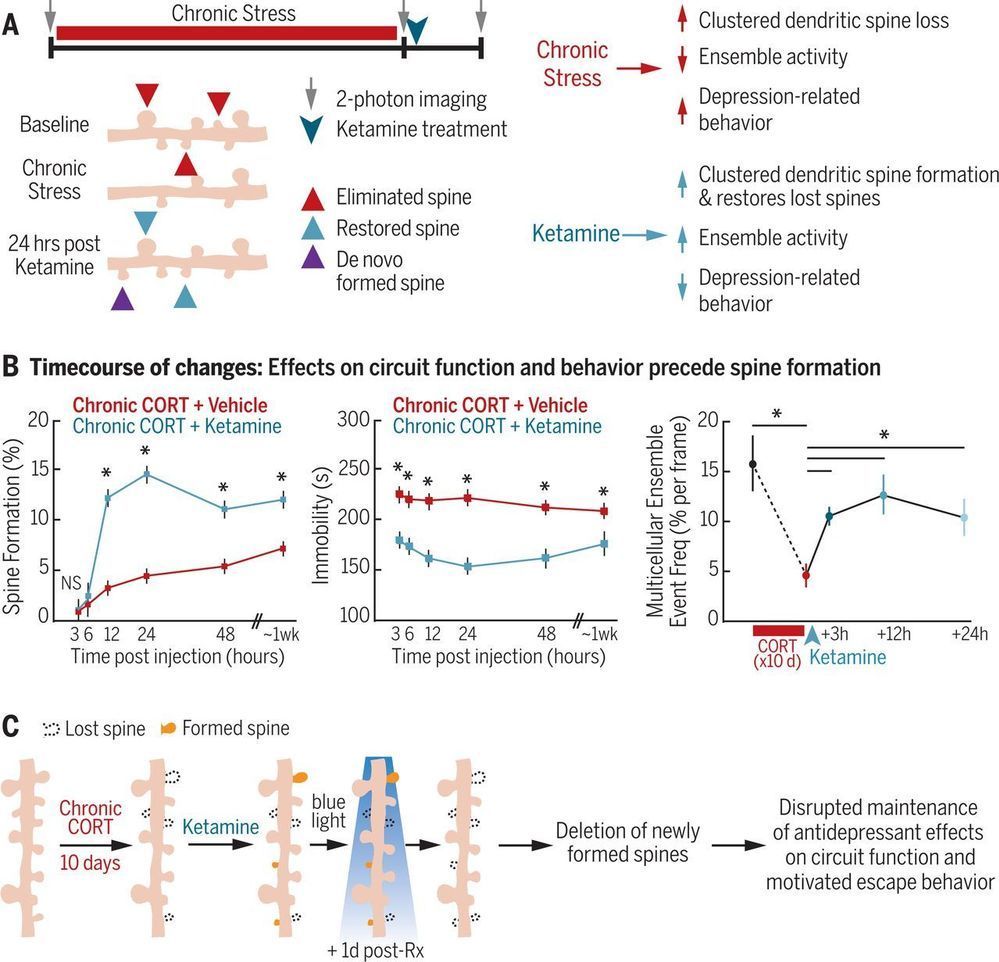A better understanding of the mechanisms underlying the action of antidepressants is urgently needed. Moda-Sava et al. explored a possible mode of action for the drug ketamine, which has recently been shown to help patients recover from depression (see the Perspective by Beyeler). Ketamine rescued behavior in mice that was associated with depression-like phenotypes by selectively reversing stress-induced spine loss and restoring coordinated multicellular ensemble activity in prefrontal microcircuits. The initial induction of ketamine’s antidepressant effect on mouse behavior occurred independently of effects on spine formation. Instead, synaptogenesis in the prefrontal region played a critical role in nourishing these effects over time. Interventions aimed at enhancing the survival of restored synapses may thus be useful for sustaining the behavioral effects of fast-acting antidepressants.
Science, this issue p. eaat8078; see also p. 129.
